Career Engineering: Allen Farmelo on Recording Cinematic Orchestra, & That Post-Pink Floyd Sound
CHINATOWN, MANHATTAN/FORT GREENE, BROOKLYN: What headspace are you in? For a music producer/engineer/mixer like Allen Farmelo, getting your talents to that sought-after place is all about finding yourself.
In the process of doing that, of course, people will find you — that explains why one of Farmelo’s fans is an artful outfit like Cinematic Orchestra, the engrossing British jazz/electronic/soul influenced outfit led by Jason Swincoe. The ever-evolving group recently called on Farmelo to engineer their upcoming release for Ninja Tune, a project that he executed in the semi-exclusive confines of Chinatown’s intriguing Mavericks Studio.
Whether working at Mavericks or mixing/mastering at his rapidly evolving Fort Greene facility, The Farm, Farmelo’s primary angle – a sound he gravitates to that he calls “Post-Pink Floyd” – and artist-centric philosophy shows how an NYC audio pro gets on the map. As his list of credits grows (The Loom, Second Dan, Cucu Diamantes, Jonah Smith, Ian Gillan, The Cabriolets, Jesus H. Christ), so does his insight on what makes today’s music, and the business of it, tick.
You’ve been working a lot with Cinematic Orchestra the last few weeks. How would you describe that workflow?
I wouldn’t say it’s improvisational, but I would say it’s a very grand project that operates on a lot of different levels and that there’s a lot of exploration happening. Jason’s done a lot of writing beforehand, and he brings in musicians to flesh out the ideas. The writing is extremely intentional, and harmonically/melodically very plotted out. He knows the goal of those songs.
He’s an amazing producer because he manages to get people to do stuff that works for the song, without telling them what to do. Is he micromanaging? No. But is he getting the micro-details he wants out of people? Yes. So I’m watching him closely and learning from him.
Cinematic’s not like the Beatles where you have the same four members, and without one of them you’re done. Jason’s brought in people he feels will contribute to that particular song in the way he thinks it will happen best. Different singers for different songs, that kind of thing. So far it’s a bit of a different-sounding record than the previous one, and I think the lineup will reflect those changes.
So what’s it like coming into the project as an engineer? Do they let you do your thing, or is it a collaborative process?
Jason knows what he wants to hear, he is extremely good at communicating it, and he lets me achieve that. He can sometimes get right down to the gear. They were working at Livingston Studios in London, using those Coles 4038s as the overheads. He described that setup, and I did that here to get the specific sound that worked well when he tracked in England.
So sometimes he’s very specific, other times he’ll describe a vibe or metaphor to get what he’s looking for, and then the way I achieve that is up to me. Mixing the Grey Reverend record that Jason produced was a lot like that, where both Grey and Jason would articulate well what they wanted from the record. Then I sent them home, said, “Let me do this,” and then let them come back.
My first stab was good on about 70% of the material — and then fell on its face on the other! We talked about that, and they were very good at articulating what they wanted changed. So we freed up some things in the mix, found the center of the record, and let those things happen. As the record went on, I was able to take more ownership of the aesthetic. So the collaboration is very easy and open.
So is it easier to go into this project now that you’re in the same headspace? Are there traditional references to other records he’s listening to as far as the approach, or is it like you’re already aware of what he likes based on the past experience?
Jason has written amazing, amazing music that is dictating everything about what follows. The songwriting is so strong and beautiful that everybody else is just there to serve that song – including Jason. I don’t feel any references to anything outside of those songs happening at all. Instead we’re coming from the center of those songs. And when you hear them, they all have their own character, life, logic, feel, tonality and beauty that’s obvious from the get-go, even when they’re just played on acoustic guitar. You say, “That’s freakin’ beautiful. Let’s make it more beautiful.”
How do you go about taking the song further at that point?
So everything from changing a mic to subdividing a beat to figuring out how to lay a crash down is there to serve that inner logic. Jason makes sure we’re there to serve that inner logic and the inner beauty of the song, and he communicates it very easily. You have the songwriter, the vision, and the songs are giving you tons of information from that.
You don’t have to do that much to know how to get the studio to sing properly for the song, and that’s where I feel I’m trusted to make some good choices along the way. It can be something as simple as, “Wow, slow tempo – let’s raise the overheads and let the drums sing a little more,” or for more complex patterns I might think, “Let’s get things a little tighter.”
For me, setting the tone on the guitar amp is instinctively informed by the guitar pattern. Since we feel very much in tune with the music, we all kind of trust each other aesthetically and say, “OK, let’s make this happen.” There’s not a lot of discussion about this stuff. It’s kind of obvious when things are working or not, everyone’s got great ears.
The thing that’s refreshing about working with these guys is that there’s no ego to get in the way of this discussion, so it’s an aesthetic conversation at all times – a really clean and artistic conversation.
That sounds like a rewarding way to be recording. Why is this studio a fit for this band and record?
Well, Maverick’s fits any project really well, as long as you don’t need to record forty musicians here. I had thirteen here once – that worked surprisingly well. That was a big, amazing, raucous New Orleansy anti-war album. So Maverick’s can kind of do that. We did the strings for Grey Reverend’s upcoming album here – we had a quartet in the main space. I did the whole Loom record, Teeth, which was a six-piece band all playing in the room together. A lot of people come to just do drums. It’s a very versatile space, and as long as your mics are in phase, you’ll sound good. There’s really no crappy-sounding place in here. For the Cinematic record, there’s just something wonderful happening between the songs and the room sound. They match beautifully.
It feels that way. What do you think about the “open concept” (studio in the round) format here?
I’ve been on two Tape Op Conference panels with other people talking about open concept studios, so I’ve thought a lot about it. And of course the most famous reference is Lanois. The number one benefit of it is being able to speak face-to-face with the people you’re working with and not through a talkback system. The alienation of a talkback system is apparent as soon as it’s taken away. It’s so nice to pull off the headphones and talk to the person you’re speaking to.
The drawback is there’s no room for bullshit. Everyone has to be reverent to the music happening. You can’t rattle your keys, text your boyfriend, read Vogue – a lot of what normally happens in the control room can’t happen here. So if you’re not into being reverent, you have to go into the back room where there are no speakers. You’re either in or out.
I didn’t realize I was paying so much attention to what was coming out of the speakers – instead of to the musicians – until I started working in an open studio. It’s a positive for me, but not for everyone – my friend Joel Hamilton jokingly calls us a bunch of hippies that like to sit in the same room together, and he’s kind of got a point as it can be pretty touchy-feely. But the other most obvious benefit is the amount of space I have. We have one of the biggest control rooms in NYC, because we have all this space, and when we’re tracking we can subdivide it any way we want.
If we’d had a separate control room, we’d be like a lot of little studios, but instead we’re like a good midsize studio here. For a facility our size, we have a really big control room and a really big live room. They just happen to be the same space – it’s an incredible way to take advantage of small spaces.
That makes sense. What guides the gear choices here?
First and foremost, we have pairs of everything in the studio: Coles 4038’s, Royer 121’s, RCA BK 5As, Beyer M 160’s, Shure SM7’s, Elux 251s, 87s, 84s, 441s…a pair of everything. The point being that we are really ready to put up a pair of anything on any source, so we are really versatile when recording drums. We can get any flavor stereo overhead and room sound we want.
We used to have a mishmash of preamps, and then came to realize really quickly that we love API, and miss the glue/consistency of having the same preamps working off of a console. So we have 16 of the API 512s. We do have other pres – the Chandler, a pair of original 1073 Neves racked up by Brent Averil…but we have far fewer flavors then we used to, and we love it. We’re thrilled to have the same preamp on everything, because when you bring up the faders it all sits together tonally. We went through the “We could have a little of everything phase” and grew out of it.
We have a lot of really interesting compressors, and a lot of really standard standbys. We have two Purple MC77s, two 1176s, and a pair of DBX 160’s that used to belong to Johnny Cash! We have a pair of Distressors. Where we deviate is the API 2500 – I mix through that 2500 almost exclusively. I have one in my studio in Brooklyn, The Farm, and I have one here that’s always strapped onto my two buss. It reminds me not to over compress and to cascade from the individual channel compressors into that bus compressor. I work with it on all the time, so I know where I’m going to land compression-wise when it comes time to mix.
And there are other non-standard compressors here. We just got the Airfield Audio Liminator Two, which is a beautiful piece of kit, and this Gyrotek Varimu Tube Compressor is stunning – handmade in Denmark. So we have a lot of neat flavors on the compression side, and again, everything is stereo. We have two of everything, so you can run any pair of mics through any pair of pres/compressors.
Do you also mix here, or at The Farm?
I used to mix here, and then I had to mix back at my place because of a scheduling thing – this was like in 2006. So I recorded a record for Rachel Z., which featured Tony Levin, and other great musicians, and due to scheduling and some technical issues I ended up with mixes done on the console here at Mavericks, some summed in Pro Tools here, and some mixed in my room in Brooklyn. When we got to mastering, there were definitely differences – and the analog summed mixes were way better – but my mixes done at home were sounding really good. They were right up there. It was weird: I went to the news stand across the street from my Brooklyn apartment and saw that Rachel’s record was charting in Billboard, then I looked up at my window where my mix room is and said, “Wow, a new era.” So I did what everyone else did: I put together a mix room.
And now my studio, The Farm in Fort Greene, is a serious mixing situation. I have a lot of outboard gear, the Crane Song HEDD which I’m using to print my mixes off a Studer A-80 1/2” machine; a fully acoustically treated room. It’s pretty ideal and I’m doing pretty much all of my mixing there. That allows me to work within the budgets that are coming my way, allowing me to offer better deals to my clients and make a living at it.
That said, mixing here at Mavericks is a wonderful experience. We’ve got the Studer two-track, the center section of the Neotek, which is modified by Purple Audio, sounds wonderful. That console is like the mid-size luxury touring sedan with a badass racing engine in it.
We hear you’re putting together an interesting new console for The Farm. What was the concept, and how is it coming together?
The concept is to have an API Legacy console built from their amazing 7600 channel strips, which each have a 550A EQ, 225L compressor and 212L preamp along with four busses, four aux sends and infinite routing possibilities.
I realized after working on the big Vision console up at NYU’s Clive Davis school and then, days after, tracking at Mavericks with all API 512 preamps that API was a sound I could very happily commit to. But I couldn’t afford, nor did I really need, nor did I want to maintain, a full-on Legacy or Vision console.
The API 7600’s all connect to the 7800 Master Module to form a true, discrete Legacy console with as many channels you want or can afford. So I bought a pair of 7600s to try on a mix session and within about three minutes I knew I’d found my channels, and when I summed through the 7800 Master Module, I knew I’d found my console. Problem was I had to get it built.
Francois Chambard of UM Project in Greenpoint came on board, and our goal was to defy the look and feel of traditional consoles – which to my eye look like either Cold War-era military equipment, a dentist’s office, or some leather bound thing you’d expect Ron Burgundy to tell you he mixed his jazz flute on. I’m a really visual guy, and none of those inspire me, nor did I really want to spend the rest of my career behind one.
Instead we found a great blend between Francois’s sense of modern design and my own fascination with the landscape, architecture and design of Iceland. It’s going to look really different, yet it has the ergonomics of my favorite consoles all bundled together with space for over twenty-four channels, eventually. I couldn’t be happier, and Francois is a bad-ass designer. There’ll be racks and diffusors to match, I’m sure.
Sounds amaaaazing. Switching gears, let’s talk about the NYC recording scene. How would you describe what’s happening here?
There is an incredible energy around making records in NYC right now. Specifically in Brooklyn, there’s an incredibly good, positive foundation of recording happening.
Five years ago we were in distress a little bit, we were watching the big studios close. Now Avatar is still there, Sear Sound is still there – Walter RIP – they’re booked solid. Magic Shop is still there. These amazing rooms that really held close to their missions are still operating and they’re there for us to go in and use as needed. The new era is here, and we’re all relaxing into it.
The market crash happened in 2008, which was a grim year for everyone, but we got used to it. Now it’s a community of people making records. I see NYC as a place that adapted swiftly to a new model, and everyone’s got a room with an increasing amount of gear in it. Between the bigger studio and your own space, records are being made wonderfully that way. There are fewer places to get an orchestra recorded, but a hell of a lot of places for an acoustic guitar overdub!
The big loss is community. That’s not an original thought, but I do miss the community of being with a lot of people doing what you do. Writing for Tape Op helps, being on Facebook helps – when you have status updates, you feel like you’re in a conversation. I find I have to make an effort to find people who do what I do. It’s an effort, but it’s worth it.
So there’s a lot of obstacles to overcome, but musically I think NYC is bringing together the sophistication of indie, jazz and “new” classical music with the street levelness of the rock scene – now it’s almost the norm to have a string quartet on your record. I like seeing those worlds coming together. Maybe because no one can make a living at it anymore, we’ll all play on each other’s records! That cross-pollination is really exciting: Grizzly Bear and Arcade Fire used a lot of NYC string players on their last records, and you can feel a new kind of sound emerging nationally that has a particular stamp on it that, to my ears, says “Brooklyn.”
You’re from Buffalo originally, right? How did you work your way up as an engineer in the NYC studio scene?
I’m very much a self-taught guy. I had a bit of experience working at Trackmasters in Buffalo, now called Inner Machine and owned by the Goo Goo Dolls. It’s an amazing room, designed by John Storyk, and the Goo Goo Dolls are currently packing it with amazing gear. That studio is absolutely iconic in Buffalo’s music scene, and my first time in there I was playing keyboards in my highschool jazz band. We were badass that year, and then all the great players went off to college. It’s funny, I heard that recording recently and thought, “whoh, that’s amazing.”
Anyways, that first experience in a real studio had me hooked, and I soon after got a four-track and had at it. But where I really learned was in the DIY hardcore scene of the late ‘80’s. I did a record at Trackmasters in 1989 with my band RedDog7, then helped some friends make records there. I was kind of producing, but I had no idea that’s what I was doing. We made some seriously good sounding records, actually, and I was obsessed with getting good sounds – I knew guitars, amps, drums, cymbals, strings and even obsessed over sticks and picks. My head was way up in it from an early age, and I was thinking from the player to the instrument to the mic, which I now know is the right way to think.
Then we had a band house for a while, and and then this whole basement situation with the Mackie board and DAT machines. We made deals and acquired gear, recording, doing live sound and playing gigs, and then running this little DIY studio. That’s where I really cut my teeth as a recording guy, struggling to get a decent sound outside of Trackmasters. Over time in Buffalo I had the chance to become a bigger fish in a small pond, which is a nurturing environment, but that pond got too small. It was time to move on, so I came to NYC.
What’s your take on producing? You seem to have a studied approach to that role.
My philosophy of producing is that I try not to carry around any pre-ordained philosophy, but instead to generate a philosophy for the project in collaboration with the artist. I call that “guiding principles” – a very intentional guiding philosophy I try to lock in on and externalize for the project, in case we get lost.
For example, I’m doing a children’s record with the Brooklyn-based artist Shelley Kay, and we have two guiding principles. One is, “Not Romper Room”, and the other is “Playful Minimalism.” Not-Romper-Room is easy – that means that whenever we’re getting into the mamby-pamby kindergarten shit, hit the red STOP button. And “Playful Minimalism” means that when we’re confronted with a decision we ask: Is it playful? It is minimalist? Those two words show us the choice to make. Between two drum patterns for example, if one is more minimalist, that’s typically the one to go with, and the result comes back closer to our original artistic intentions to keep the production clean.
Another artist that I’m working with, the guiding principle is “Sincere Otherworldliness.” I’m putting him through the paces as a songwriter. He’s been struggling to get his sincerity out, and the otherworldliness is an outwardly-stated goal of his to create a sonic world that’s very different from reality, another world one can enter into. To bring those two together is difficult – if you’re too sincere, you can’t get it spacey and amazing, but if you’re too otherworldly, you can miss being right there with the listener, making it sincere. These principles are meant to be challenging.
In production it’s very hard to stop saying, “I like that, I don’t like that.” If that’s going on in the conversation, you’ll never get to the heart of the matter. If you get past “I like that, I don’t like that” and closer to stating what you want to achieve, something like a guiding principle starts to open up, and you have much more productive conversations about what’s happening.
In my work, that’s the best thing I can give to their project: an open, comfortable dialogue about things, but with structure instead of just being completely wide open. One of the functions of the producer is to help the artist specify what they’re doing, and not be all over the place. Not everyone is making their fifth record and bringing all that experience to the table. A lot of people are making their first or second, and I have to be intentional about my role, because if I don’t we get sloppy.
How did you get to be like that as a producer? It sounds like you’ve evolved in that role, just as an artist does with their music.
It’s not a new idea to find artistic growth as a producer, I don’t think. I have to attribute my own growth partly to Bob Power, one of my mentors. He always says it’s about getting to a place where you’re letting the music make decisions, and I know exactly what he means. That idea inspired me to ask, “Well, how do you get to that place?” Like most great ideas, it’s not complex, but it can be a real bugger to achieve. There are so many things that can get in the way, like ego, fear, imagined or real audiences, commercial pressure, well disguised self-sabotage tendencies – basically anything external to the actual crafts of writing, performing and recording music. For me, to get to that place where the music is speaking clearly requires a pretty intentional approach to how I talk about the work being done, and that’s where the guiding principles idea kind of came from.
More and more of us producers are doing the A&R job of developing artists and their material. If we don’t have record labels, who will do all the development work? It turns out to be the record producer in a lot of cases. It’s a big part of the job. So if I can obsess about a compressor as an engineer, I hope I can also obsess about the dialogue that’s going to shape decisions about the album as a producer. That’s been a big area of growth for me, to enter into dialogue about the work with more and more clarity. It’s really fucking hard work, but when it pays off it’s amazing. I even read books about collaborating, about creativity – whatever I can get my hands on that I think might help. Right now it’s where I’m focusing my professional growth.
That sounds like amazing guidance to be able to provide throughout the process…
Yes, although I should also state that all of that development of the guiding principles, and doing the artist and material development, happens long before we hit record. It’s like pre-pre-production. It goes on long before I’m getting things ready for the actual recording date. It’s more of trying to figure out what the vision of the artist is, and helping them shape it. I’ll say it again, it’s not easy. It’s not the easy path of just saying “I like this, I don’t like that.”
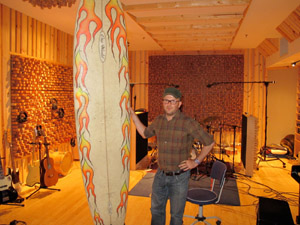
Catch a Waveform: Chinatown’s Mavericks pays homage to the famed Northern California surfing mecca of the same name.
The other thing is the kind of music I’m working on can call for this kind of approach. I’ve more recently committed as a mixer/engineer/producer to this specific vibe within modern rock music that I call post-Pink Floyd. Don’t take that term too literally, but one day someone asked that inevitable question “what kind of music do you work on” and I just said it – “post-Pink Floyd.” What I meant by it is this thread of really innovative, beautiful, spacious, compassionate music.
Pink Floyd had incredible empathy, beautiful spaces, beautiful sounds, and brought in influences of jazz and classical without doing them overly in the music. The ideas they brought in were so involved in empathy – it wasn’t, “Let’s go shake our butts and hump each other and party all night long.” Instead, they were dealing more directly with the human condition, and I just wind up working with a lot of artists who seem to have somewhat similar goals lyrically and thematically. So it’s not really about Pink Floyd in particular, but if I had to point to a moment in rock history where this compassionate, open, spacious music began, I’d say “Dark Side of the Moon.”
Cinematic Orchestra exemplifies it. Radiohead and Sigur Ros exemplify it. Elbow’s got it. Peter Gabriel’s work with Lanois has it. In fact, Lanois seems to get it out of people in general – he got it out of Dylan, perhaps for the first time. I work with a lot of artist who seem to want to work towards the aesthetic that are embodied by those examples, even if those records aren’t particular influences. Cinematic Orchestra is an honor to work with, because I feel that they’re harmonically, musically, thematically within that realm. I think they’re masters of space and compassion, and I think the record they’re making is going to blow people away. But that post-Pink Floyd thing comes in a lot of flavors. In American bands I’d include The National, Grizzly Bear, Fleet Foxes, Wilco does it do a degree, and especially Band of Horses. The Loom, whose record I produced, fits under that umbrella for me, even thought they sound nothing like these other bands, really. Again, it’s not really a particular sound, but a set of harmonic and thematic threads that run through the music.
It’s a hard and awful thing to have to put into the limitations of language something you feel and know so intuitively, but I guess that’s the exact challenge I’m putting on the artists I work with when trying to get positive dialogue happening about projects. In a way, post-Pink Floyd is my own kind of guiding priciple as I try to intentionally steer my career in a specific direction. I should probably work harder on clarifying that!
That sounds like an expansive genre to hang your hat on – what else is on the Post-Pink Floyd horizon for you?
I’m currently producing two records that are definitely going to carry some of that vibe. One is with Austin Donohue, who is writing some amazingly beautiful stuff, really finding his themes. He’s the Sincere Otherworldliness guy. The other is with Diana Hickman, who I think is writing some of the most innovative material I’ve heard in a while – like Joni Mitchell and Bjork go SCUBA diving together and surface with a record. Both of them are working their asses off, doing a ton of development work with me. Those will get done this winter.
I’ve also become inspired by Iceland as a place for music and making records. It’s a very sparsely populated, lovely place that just doesn’t go to war or pollute very much, and their landscape and relative remoteness lends itself to music that is really quite unique. When people settled Iceland, they didn’t colonize anybody, and it just doesn’t have this scarred past which so many other places rife with conflict have. It’s quieter. You can feel that lack of conflict and that quiet, and a sense of expansiveness in much of the music there, even when it’s erupting like a volcano.
At least that’s what my tired NYC ears hear. I just went back there in October to the Airwaves Music Festival in Reykjavik and saw amazing bands every night. I’m talking to one in particular about working together, and I really hope it starts to happen for me over there. I’m very interested in putting my foot on that other piece of land.
— Interview by Janice Brown and David Weiss
Please note: When you buy products through links on this page, we may earn an affiliate commission.







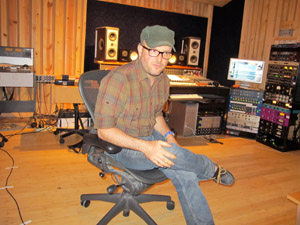
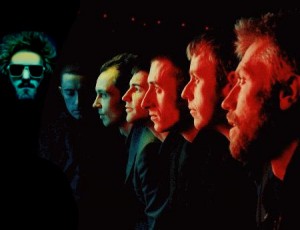
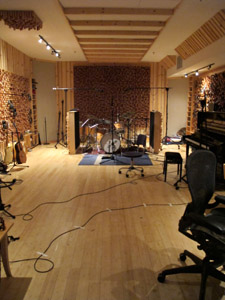
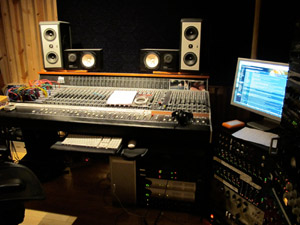

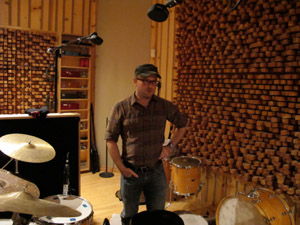
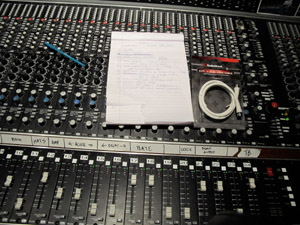
Lucas Van Lenten
November 8, 2010 at 1:59 pm (14 years ago)Great interview/article. Thanks!
Anonymous
November 9, 2010 at 5:43 pm (14 years ago)One of the best artist/producer/engineer reviews I’ve read in a long time. Great job and congrats to all of you — Jancie, David, and Allen.
Hip Hop Site
November 16, 2010 at 4:33 pm (14 years ago)Cinematic Orchestra are an amazing group. I really liked the interview. Thank you so much for posting this.